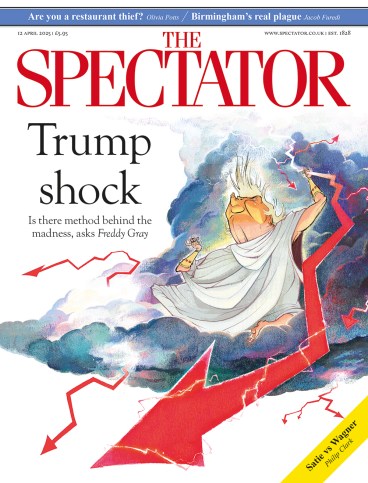
In the old days, you’d have to go to a lot of trouble to inhabit another person’s skin. Today you can simply buy a customisable 3D avatar from Turbosquid.com, animate it with your own movements by wearing a sensor-filled motion-capture bodysuit, and presto! Lifelike but eerily soulless, Ed Atkins’s video portraits occupy a strange visual hinterland between computer-game graphics and deepfake realism.
The close-ups elicit a tingling revulsion: this seems to be a human being, but something is off
A man tosses and turns in bed before his home is violently swallowed up by a sinkhole; a besuited talkshow host puffs away on Silk Cuts while conversing with the disembodied voice of a woman (Atkins’s mother) about her struggles with depression. In both videos, the artist is incognito. In another, he appears as his own digital doppelganger, performing an experimental piano composition while a camera gently zooms in on his face and hands. The close-ups elicit a tingling revulsion: this seems to be a human being, but something is off.
The curators of a new, mid-career retrospective of Atkins’s work at Tate Britain have foregrounded the personal story that inspired his morbid aesthetic. Atkins himself plays the role of tour guide via a series of first person-heavy explanatory texts accompanying the works. In one of these notes, he recalls that his artistic vision started taking shape not long after his father died of cancer in 2009: ‘I began to think of high-definition digital videos as corpses – vivid, heavy and empty.’ Indeed, many of the exhibits on show have an uncanny emotional hollowness. CGI video loops depicting a supposedly distraught young child sobbing on a stool is arresting precisely by virtue of the total lack of emotional purchase: its absurd hyperreality shuts down empathy.
In ‘Refuse.exe’ (2019), a video-game engine is rescripted to depict an endlessly accumulating pile of junk. An assortment of items – bits of wood, dead fish, cardboard boxes, metal chains, flat-screen TVs – rain down on to an ever-growing heap, accompanied by crashing sounds of varying intensity. The script continuously rewrites itself; its mesmeric pointlessness is the point. In ‘Voilà la vérité’ (2022) Atkins reanimates an obscure reel of 1920s silent film: a young woman and an old man share bread and salami on a park bench; the footage has been colourised and, with the help of two voice actors and a folio artist, overlaid with a soundtrack of sighs, stifled sobs, chewing noises and chirruping birds. We are slightly closer to recognisable humanity here, but the texture of the mashup is unsettling; we sense its falseness intuitively, even before we’ve consulted the explanatory text.
This material is juxtaposed with exhibits that evoke analogue-era tactility and sincere feeling: a vast trove of old costumes from the Deutsche Oper Berlin; a collection of some 700 whimsical doodles that Atkins drew on Post-it notes for the amusement of his kids during the Covid lockdowns; and a new video piece entitled ‘Nurses Come and Go But None for Me’, in which the actor Toby Jones reads movingly from the hospital diary Atkins’s father kept in his final months.
A number of strikingly morose self-portraits, in red pencil on yellow paper, take on added meaning when we learn that both Atkins and his mother suffered from body dysmorphia. In one series he has the body of a spider, like something from the cult meme Skibidi Toilet; it’s all the more grotesque because Atkins’s head sits unfeasibly horizontal, facing upwards, so his gaze is at right angles to any hypothetical direction of travel.
Aside from those charming doodles and doleful self-portraits, beauty as such doesn’t really figure
By enlisting his avatars in earnest therapeutic discussion – touching on loss, grief and mental illness – Atkins puts the coldness of the digital medium into sharp relief. The viewer, spooked by the dead-eyed desolation of these computerised ghouls, finds comfort in the anchoring truthfulness of authentic human feeling: real life, even in all its vulnerability, is still preferable to whatever the hell this is.
The world Atkins conjures in these absorbingly repellent works is arguably more familiar now than it was when he first started out in this line 15 years ago. We’ve all felt that glitchy existential unease when contemplating an AI-generated image or the semi-plausible ramblings of ChatGPT. It pricks at something that runs very deep in human nature and culture – one thinks of the changeling in folklore; Mary Shelley’s Frankenstein; the uncanny.
Perhaps the most troubling aspect of this exhibition is that, aside from those charming doodles and doleful self-portraits, beauty as such doesn’t really figure. If the visual timbre of Atkins’s video art should turn out to be any kind of harbinger of how our lives will look and feel in the decades to come, then heaven help us. The future will be a living nightmare.









Comments